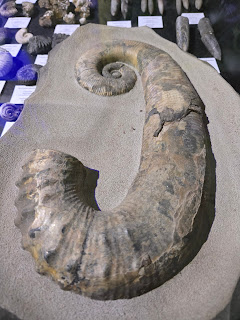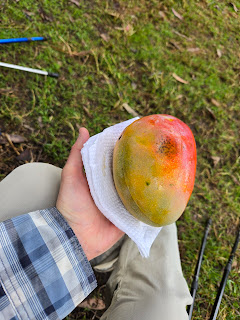There are two classic multiday treks in the greater Cusco region--"classic" in the deep historical sense, because each of these two routes incorporate sections of the ancient Inca trail through the Andes. One of these treks is the Inca Trail; the other is the Salkantay.
(A section of that original trail of the Incas)
For conservation purposes, the Peruvian government limits the number of people who can walk the Inca trail every season, so you have to plan well in advance to get one of the coveted spots. It perhaps will not be a surprise to hear that I, wandering vaguely through these mountains, did not plan well in advance. I don't really care all that much, since both treks spend a couple of days at high altitude and then descend, arriving finally on the last day at a shared endpoint (though they approach it from different directions)--about which more in a moment.
The Salkantay trail takes hikers up first past a beautiful blue lagoon snugged into the base of the Humantay mountain and glacier.
The trail then proceeds the following day up a steady grade to the Salkantay glacier at about 4600 meters (~15100 feet). Not super high altitude as the Andes go, but definitely some high-altitude views, as Salkantay Peak towers up to about 21000 feet.
After the Apacheta pass, the trail just drops for about 10 miles, down and down, from above the timberline through the first Andean cedars, through layers of low-hanging cloud and into a temperate rain forest, and then finally to the tropical climate around Collpapampa.
The fourth day of hiking brings folks to the floor of a valley at about 6700 feet. That's a lot of downhill, through plantations of mango, coffee, avocado, banana, pineapple, orange... in short, a lot of fruits you generally don't associate with a glacier trek. It's just a tremendous difference in elevation, and the radical difference in climate that goes along with it is something I haven't experienced before. From well below freezing to sweating through my clothes in a jungle in just one day. From that valley floor, there are steep, vegetation-carpeted peaks and exposed cliffs on all sides, and if you squint from below, you can see some structures up on one of those steep places.
On the fifth day, you hike the last 3 miles of your 50-mile adventure, climbing up a whole bunch of stairs so that you can actually see those distant hilltop structures up close:
And hello, Machu Picchu. Given that both the Salkantay trek and the Inca Trail end up with this view, I guess it really doesn't matter all that much which direction you approach from. Either approach provides the opportunity to walk on the stone paths of the Incas, and to appreciate just how vast was their empire--and to admire from a temporal remove the stamina of their running messengers, the chasqi, who ran along the length of the empire like a more agile pony express, a network of relay sprinters covering up to 200 miles a day.














.jpg)


















